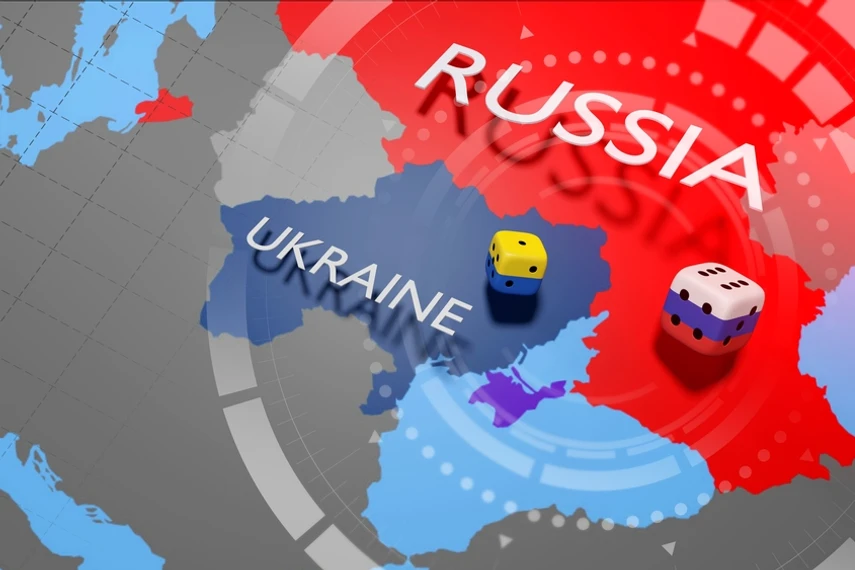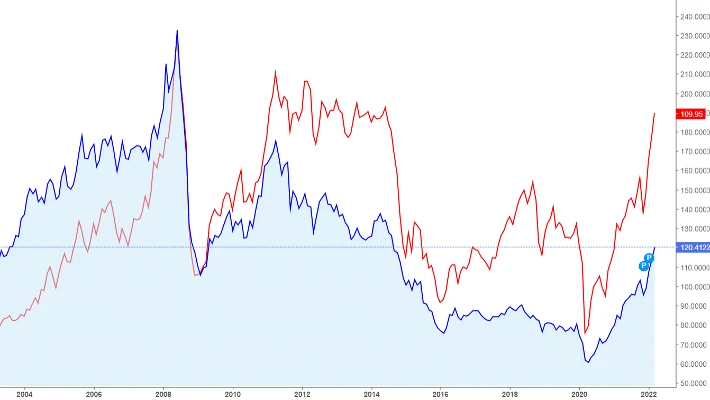
Uncertain variable
Until the very beginning of 2022, the US inflation control target was quite clear and the plan of the US Federal Reserve (FED) to raise interest rates was well anticipated by the market. In January 2022, the US stock market saw a sharp decline from the historical peak, which reflected target interest rate expectations. The S&P 500 Index fell more than 10% before recovering again.
However, when the Russia-Ukraine conflict arose suddenly, the markets saw more risks and unpredictability. The problem is that it is hard for investors to actually gauge the scale of the effects of the conflict. Many experts and international investment organizations have forecast and analysed the current conflict, but most are inclined to believe that tensions in the two breakaway regions will exist, rather than a full-scale conflict. In other words, limited conflict will not cause shock changes in global commodity markets, trade and capital flow.
There are historical statistics from the past that wars do not have much influence on the volatility of the stock market. For example, the war in Iraq in 2003 only caused the S&P 500 Index to drop 3%; and the Russian annexation of Crimea in 2014 decreased index by 0.2%. International statistics that summarize 29 geopolitical crisis situations from 1945 until now, show that it only takes an average of three months for the S&P 500 index to recover and go higher than before a crisis.
However, the Russia-Ukraine conflict is happening at a time when mutual sanctions are being used more than ever, especially since the US-China trade war. It has been seen that in the last two weeks, a series of sanctions and countermeasures have been implemented by leaders on an extremely large and unprecedented scale, such as the exclusion of Russian banks from the Swift International payment system, and even shutting down of other countries airspaces. The scale this time is not only in the number of economies joining the multitude of sanctions but the wide range of areas that have been subjected to sanctions. This is something that the financial markets have never ever seen before.

However, two weeks after the conflict broke out, the sanctions were still unclear, leaving investors unable to assess the impact and extent. For example, the Russian side has not yet made any responses, even though Russia is a country that provides most of the world's very important goods, from chemicals to oil, agricultural products, and minerals. Therefore, even if Russia has not yet shown concern, investors across the world are worried.
If Russia uses oil and gas as a sanctions tool to retaliate, it will be a bad scenario for the world, particularly when the world is still reeling under the drastic effects of the Covid-19 pandemic. Even if we exclude oil and gas, the prices of major Russian exports such as grain, fertilizer, steel, and aluminium have also skyrocketed because of difficulties in payment transactions and high cost of transportation.
Some opportunities
It is becoming very evident now that even if the current Russia-Ukraine conflict ends now or later, the onslaught of severe sanctions will not end for a very long time. The reciprocal action in implementing sanctions ever since the time of the US-China trade war during the Trump administration, are still in place. Even the sanctions imposed since the time of the annexation of Crimea by Russia, have not been lifted.
Therefore, this present confrontation will be at a higher and broader level, and certainly more intense. The economic consequences of the Russia-Ukraine conflict will therefore alter international relations in terms of trade and credit. For example, Russian goods will be restricted or even prevented in the European or American markets and vice versa. This indirectly leads to a change in the business of the global enterprise in relation to these markets.
The global stock market in general and the stock market in Vietnam, have processed the detrimental as well as advantageous impacts of the current crisis in Ukraine. Shares in the financial sector have fallen sharply, while shares of companies exporting goods to Europe have jumped. With the rising oil price, upstream and downstream businesses have both benefitted and this is not difficult to predict.
However, a great opportunity also exists for steel enterprises as Russia and Ukraine accounted for 21% of total imports to the EU market in the first eleven months of 2021. This market share may shrink, or even become vacant, which means there are opportunities for other businesses. The seafood market in the EU may also need to be compensated if the Russian market shrinks.
In addition, the soaring increase in basic commodity prices is also creating opportunities for other businesses. Coal mining is benefiting as Russia is the third largest exporter in the world, according to data received for 2020. Ukraine is the world's fourth largest corn exporter with a market share of 22%, which also means that the price of corn will skyrocket, leading to an increase in the price of animal feed. The fertilizer market also has opportunities as Russia accounts for 13% of the total world trade in this item.
For investors, there is no such thing as a negative one-way transaction. At times of crisis, there is always an opportunity waiting to be discovered and the key lies in seeing the opportunity early and not getting lost in the risks involved. Commodity prices have skyrocketed, creating inflation, and the resulting pressure on interest rates is being considered a risk in the stock market, but there are businesses that also benefit and increase profits during such times.




















